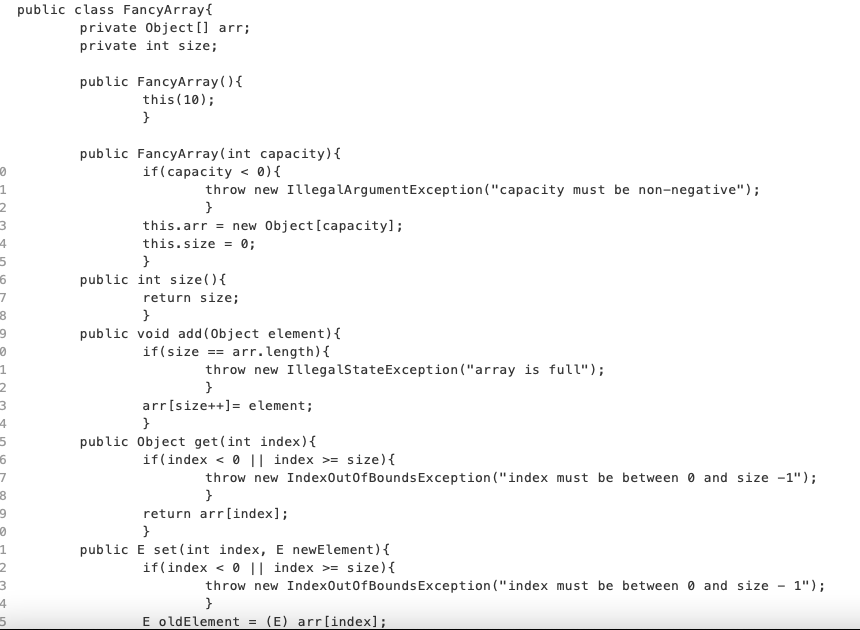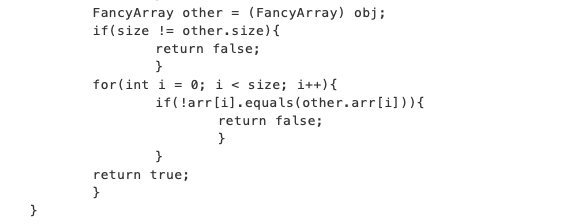Answered step by step
Verified Expert Solution
Question
1 Approved Answer
Please code these two parts for me, in Java!! (Part A): (Part B): Here's my code that you can use for reference, if you want:
Please code these two parts for me, in Java!!
(Part A):

(Part B):

Here's my code that you can use for reference, if you want:



Add the following two methods to the FancyArray class: - public int indexOf(E e): returns the index of the first occurrence of e in this FancyArray; if e does not occur in this FancyArray, returns 1. - public int lastIndexOf( Ee) : returns the index of the last occurrence of e in this FancyArray; if e does not occur in this FancyArray, returns 1. For example, if fa is a FancyArray representing [5,10,15,10,20], then: - fa.indexOf(10) should be 1 - fa.lastIndexOf(10) should be 3 - fa.indexOf(25) should be -1 - fa.lastIndexOf(25) should be 1 Note: If you wish, you can make the parameter type be Object instead of E. It doesn't really matter for this exercise. Note: do not use ArrayList (or any other kind of List or Collection) in the FancyArray class. Additional Notes: Regarding your code's standard output, CodeLab will check for case errors but will ignore whitespace (tabs, spaces, newlines) altogether. - public void add(int index, E element): Inserts the specified element at the specified position in this FancyArray. Shifts the element currently at that position (if any) and any subsequent elements to the right. - public E remove(int index): Removes the element at the specified position in this FancyArray. Shifts any subsequent elements to the left to fill in the gap. Returns the element that was removed. Examples: - Suppose fa1 is a FancyArray representing [5,10,15,20]. After we say fa1.add(2, 25), fa1 should represent [5,10,25,15,20]. - Suppose fa2 is a FancyArray representing [5,10,15,20]. After we say fa2.remove(1), fa2 should represent [5,15,20]. Throwing exceptions: - The add(int index, E element) method should throw an IllegalStateException if the array is already full. Also, this method should throw an IndexOutOfBoundsException if the provided index is negative, or if it is greater than the size. Note that it is possible to add an element at index size, as long as the array isn't already full. - The remove(int index) method should throw an IndexOutOfBoundsException if the provided index is negative, or if it is greater than or equal to the size. Note: do not use ArrayList (or any other kind of List or Collection) in the FancyArray class. Additional Notes: Regarding your code's standard output, CodeLab will check for case errors but will ignore whitespace (tabs, spaces, newlines) altogether
Step by Step Solution
There are 3 Steps involved in it
Step: 1

Get Instant Access to Expert-Tailored Solutions
See step-by-step solutions with expert insights and AI powered tools for academic success
Step: 2

Step: 3

Ace Your Homework with AI
Get the answers you need in no time with our AI-driven, step-by-step assistance
Get Started


